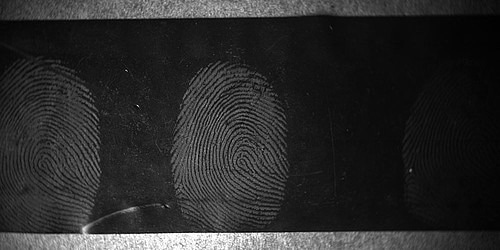The SceneScope RUVIS Forensics Camera from Horiba captures Ultra-High Resolution images with the new 29 MP Ultra High Definition camera.

Image Credit: HORIBA Scientific
Features
Use and Benefits
The SceneScope RUVIS 29MP is an Ultra High-Definition camera based on a 29 MP sensor that comes with a full-frame chip and a 6644 × 4452-pixel resolution.
It consists of capture software with three user-selectable modes: Focus on the evidence, Fast Viewing for placement, and High Detail for Capture at High Resolution and High Dynamic Range.
SceneScope RUVIS 29MP devices use 254 nm UV light, but unlike Forensic Light Sources, they are not detecting fluorescence. Instead, the device looks for the reflection and scattering of the 254 nm light off of the fingerprint ridges.
The System has the potential to detect fingerprints on the majority of the non-porous surfaces before any treatment or following a cyanoacrylate (Superglue) fuming. Fuming is needed when preliminary examination yields no outcomes. The two main RUVIS applications are cyanoacrylate (CA) fumed prints and untreated prints on most non-porous surfaces.
Improved Software
Currently, the SceneScope RUVIS 29MP capture software is made even simpler to use with user-definable defaults. The software allows the user to speed up their workflow, depending on the evidence processed.
It has been classified into categories depending on the part of the spectrum that is being utilized in the search (VIS, RUVIS, IR) and consists of three three capture modes: Search for scanning, Focus enabling a zoomed view to adjust the camera and Capture to obtain an ultra-high-resolution image.
Smooth, Non-Porous Surfaces
Before the treatment, the SceneScope RUVIS 29MP Camera enables the detection of latent prints. This is made possible on surfaces that reflect light very well and do not absorb prints - in other words, surfaces that are non-porous and smooth.
Untreated prints with residual moisture appear as white reflective ridges on a black background.
Untreated oily prints appear as strong, black ridges on a shiny background.
“Supergluing” the print when the surfaces become rougher or more porous can help extend the range of surfaces on which RUVIS will work.
Detects Latent Prints
The detection and capture of untreated prints on most non-porous surfaces and cyanoacrylate(CA) fumed prints are the two primary applications of RUVIS.
Print collection can also be performed on surfaces like plastic bags, the sticky side of tape, glossy magazines, photographs, linoleum tile, compact disks, credit cards, etc. – Cyanoacrylate treatment (fuming) will further enhance the detection by RUVIS.
Comparison

Image Credit: Horiba Scientific
The image above clearly demonstrates the difference between an image captured with a 16 MP (megapixel) image and a 29 MP. Having almost double the number of pixels, the 29 MP provides a finer resolution. When zooming into a fingerprint ridge, the 29 MP displays pores that have been missed with a 16 MP camera image. The small pores are clearly visible.
Capture an Image Once in High Resolution
The system has the capacity to capture a huge amount of detail in a single image, even if that image spans a large area like a full palm.
The 29 MP Ultra High-Definition Camera has the potential to capture high-resolution images at 254 nm that could be enlarged to view all levels of detail. The camera can also capture a complete palm image of all the data essential to “zoom in” and view separate minutia points.
Background Rejection
As the SceneScope RUVIS 29MP sees the surface detail, it only sees material deposited on those surfaces, not materials “IN” the surfaces.
This enables a higher quality of Background Rejection as the device does not see inks and patterns in printed material. The background will disappear as long as the surface does not show rises or indents.
Universal Imaging System
The SceneScope RUVIS 29MP is considered the new camera on which the Universal Imaging System has been built. The UIS still features a forensic light source, computer, and image enhancement and comparison software, but with higher image resolution than before.
The configuration for the UIS can be customized to the requirements of the customers via pairing with the correct light source for the applications covered. The SceneScope RUVIS 29MP provides first-in-class resolution and complete spectrum abilities for latent print processing, enhancement, capture, and comparison.
Specifications
Camera Specifications
- Resolution: 29 million pixels
- Data Transmission Rate: Three user-selectable operating modes
- Search: 10 fps
- Capture: 1.7 fps
- Fine Focus: 11 fps
- Spectral Sensitivity: ranges from 250 nm to 1100 nm
- Integration time: 1 millisecond to 16 seconds
- Data Transfer: Gigabit Ethernet
- Aspect Ratio: 3:2
Safety First
All SceneScope RUVIS UHD Devices consist of skin and eye protection devices to protect against UV radiation. All RUVIS devices have lamps that emit high-intensity shortwave ultraviolet. Exposure to such wavelengths of radiation, even reflected or diffused, could lead to severe, and at times irreversible, skin and eye injuries.
One shouldn't aim the shortwave UV lamp at anyone. Also, do not look directly into the shortwave UV lamp. It is essential to wear suitable eye and skin protection while using any RUVIS device.
The system has been manufactured under ISO 9001 standards.
As far as any alternate light source is concerned, it is necessary to always wear skin and eye protection. Please illuminate responsibly.